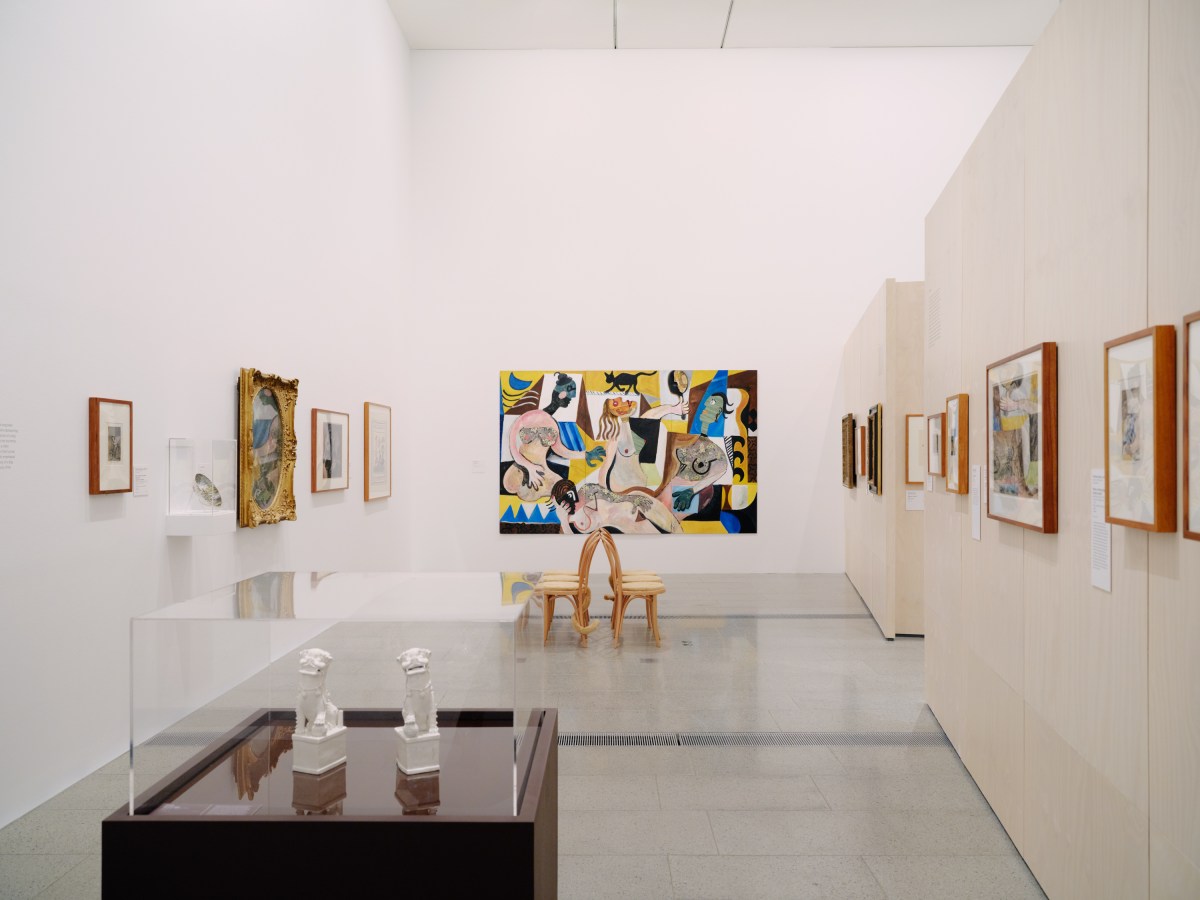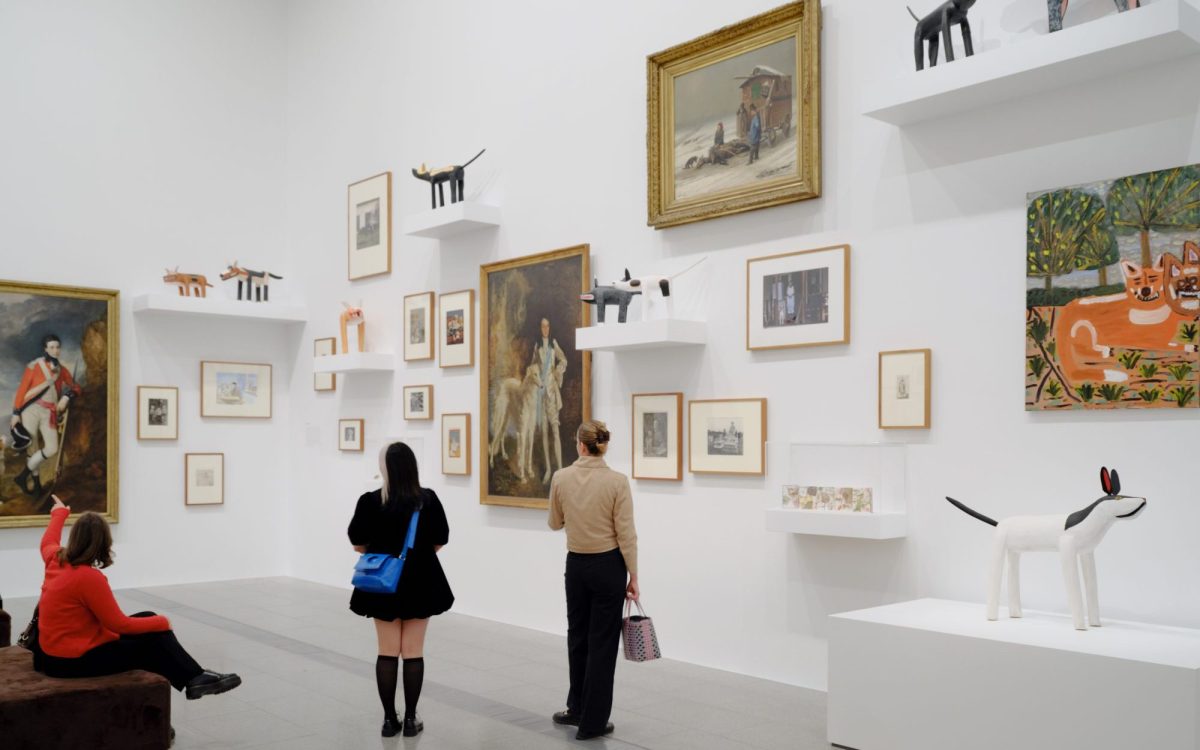When Cats & Dogs was announced as the new exhibition at The Ian Potter Centre: NGV Australia in June this year, it’s not hard to see why, as an idea, this is pretty much failproof. These domesticated (or nearly domesticated, in the case of felines) companions have earned their place in our homes, history and culture, and the amount of joy they bring can hardly be overstated.
However, despite the intrinsic popularity of the topic, Cats & Dogs has managed to go beyond the cliché in its exhibition design and selection of over 250 works from the NGV Collection, including half a dozen new acquisitions.
While the ‘cats versus dogs’ competitiveness exists – viewers can enter the exhibition through the left for ‘Dogs’ or the right for ‘Cats’ – there is a playful synergy between the two camps and one need not be team pooch or puss to enjoy the show.
The expertise of co-curators Laurie Benson and Imogen Mallia-Valjan also lends a surprising twist, where an old master’s work like Saint Eustace (1501) by Albrecht Dürer is on view alongside Philippe Halsman’s photo of Salvador Dalí suspended gleefully behind a curtain of water and three very wet cats thrown in mid-air (26 takes to capture the shot). In another case, a Japanese kimono from 1925-35 with frolicking puppies hangs beside Jeff Koons’ porcelain Puppy (Vase) (1998), both commenting on our companion animals as a symbol of wealth and status. In an age so saturated with the representation of cats and dogs in digital and pop culture, these historic pieces, paired with their contemporaries, provide insightful cues as to how this relationship has evolved.
Visitors will need to navigate through the relatively compact hang, where spatial awareness and depth of vision is sometimes impaired by the large beige timber panels that separate the space. But the way the exhibition opens out in the final gallery, with an impressive array of photography, painting and wood ‘Ku’ or ‘camp dog’ sculptures climbing up the wall like constellations, makes Cats & Dogs a rewarding viewing experience.

Not to mention that an interactive photo wall is located near the exit where your own furry friend can get a chance to be the star at the NGV. Visitors can scan the QR code to upload a cat or dog photo, which will then be vetted mostly by AI to determine if the photo is appropriate for public viewing – this writer has been told that a cat with a hat would pass the test, but a dog with sunglasses, sadly, would not.
The exhibition design team has gone above and beyond in terms of providing custom-made furniture for the show, including a set of six fluffy cat chairs that kids will no doubt attempt to monopolise.
Read: Exhibition review: Tommy Carman: Well Heeled, Mega
Cats and dogs in screen culture is another feature of the show, where the NGV worked together with its neighbouring Australian Centre for the Moving Image (ACMI) to display a selection of film and screen ephemera, including the 1900s cartoon sensation, Felix the Cat. A humorous addition outside the main gallery area is the video Dogs Can Act, Cats Would Prefer Not To (2024), a highly entertaining collage of footage that underscores the essential qualities of both species.
Overall, Cats & Dogs has achieved what it set out to be – fun, family friendly, diverse and well thought out. It’s a show anticipated to be a major traffic driver in the upcoming holiday seasons. Several pieces currently exhibited in Cats & Dogs will be swapped out in March 2025 for conservation purposes.
Cats & Dogs is on view from 1 November 2024 to 20 July 2025 at The Ian Potter Centre: NGV Australia; tickets $16 (non-member adult).





